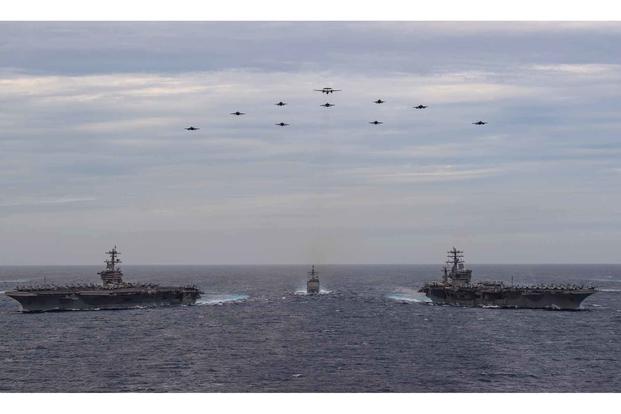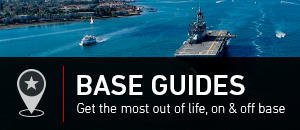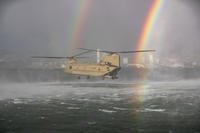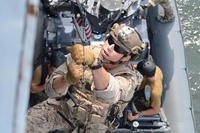This story was updated June 23, 2021.
The U.S. Navy may not have the most ships of any country's fleet, but it is well established as the greatest power on the world's seas. The Navy owns 11 of the world's 43 active aircraft carriers -- and that doesn't count its nearly two dozen flat-decked amphibious ships that might well be considered carriers in their own right.
Despite this impressive power on the seas, leaders continue to have concerns about how many ships are in the U.S. Navy inventory, warning that competing maritime powers such as China are growing in naval strength and may soon have ocean dominance.
Since December 2016, the Navy has called for a fleet of at least 355 ships, up from its current battle-force total of fewer than 300. This is the minimum number leaders have said is required to conduct all required global missions. But the daunting cost of building that fleet -- an estimated $26.6 billion per year for 30 years -- and the challenge of ramping up shipyard work to meet demand have kept progress slow.
The 30-year shipbuilding plan released by the Navy in 2020 has the service reaching a fleet of 355 ships by 2049. It expects to build its active ship total to 305 by the end of 2021. The Navy is also pursuing a number of unmanned ship platforms, large and small. These will not count toward its 355-ship goal, however.
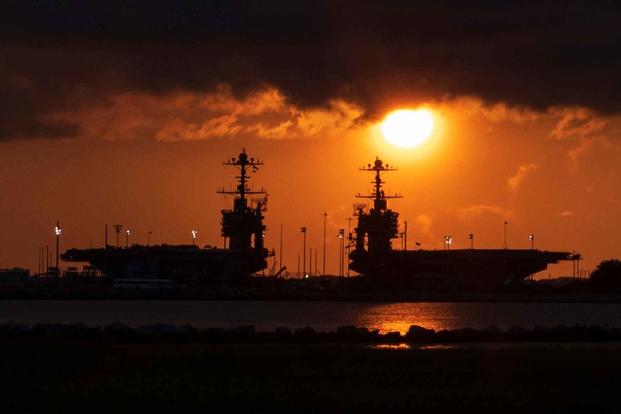
How Many Ships Are in the U.S. Navy
According to data compiled and updated by the Navy, here is the current total of battle-force ships as of June 23, 2021.
Aircraft Carriers: 11
Surface Combatants: 115
Submarines: 68
Amphibious Warfare Ships: 31
Mine Warfare Ships: 8
Combat Logistics Ships: 29
Fleet Support: 33
Auxiliary Support: 1
Combatant Craft: 0
Other: 0
Total Battle-Force Ships in Inventory: 296
Total Active Ships in Commission: 251
(The number of ships active in commission includes those that are commissioned but not battle-ready, such as the USS Constitution; and excludes most combat logistics and fleet support ships.)
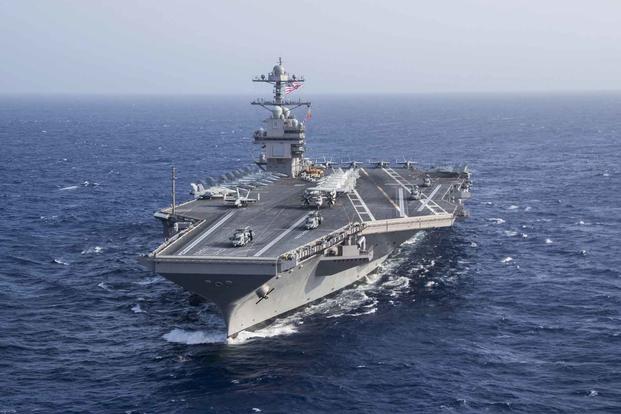
Navy Aircraft Carriers
There are two active classes of nuclear-powered Navy aircraft carriers: the legacy Nimitz class, and the new Ford class.
The 10 carriers in the Nimitz class include the following:
- CVN-68: Nimitz
- CVN-69: Dwight D. Eisenhower
- CVN-70: Carl Vinson
- CVN-71: Theodore Roosevelt
- CVN-72: Abraham Lincoln
- CVN-73: George Washington
- CVN-74: John C. Stennis
- CVN-75: Harry S. Truman
- CVN-76: Ronald Reagan
- CVN-77: George H. W. Bush
In the Ford class, the lead ship, Gerald R. Ford, was commissioned in July 2017. At least four more ships are planned in the class: the John F. Kennedy, set for commissioning in 2025; the Enterprise; the Doris Miller; and another carrier, yet to be named.
The new aircraft carriers are set to replace ships in the Nimitz class as they retire; the Navy plans to have a total of 12 carriers in service in 2049, when it hopes to achieve its fleet of 355.
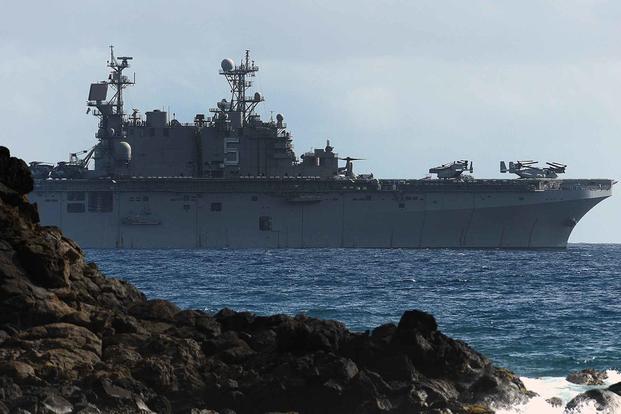
Amphibious Ships
The Navy's amphibious ships, sometimes called miniature carriers, are used to deploy Marines and sailors forward around the world for training, combat and humanitarian missions. The classes of amphibious ships include the following:
Wasp-Class Amphibious Assault Ship (LHD-1)
These ships have been in commission since 1989 and are capable of transporting a full 2,000-strong Marine Expeditionary Unit, with fighter jets, helicopters and combat vehicles.
The ships are 843 feet in length and can carry up to three dozen aircraft on the flight deck in a mix of fixed-wing and rotorcraft platforms. They also feature a well deck from which amphibious craft and connectors can land and launch.
Only one of the original eight ships of the class is out of service: the Bonhomme Richard, which was severely damaged in a catastrophic fire in July 2020 and is designated for decommissioning in 2021.
America-Class Amphibious Assault Ship (LHA-6)
The first of this newest class of amphib was commissioned in 2014. The America class features more flight deck space for aircraft, but does not have a well deck like the other amphibious assault ships.
It was designed as a platform for some of the Marine Corps' newest aircraft platforms, the F-35B Joint Strike Fighter and the MV-22 Osprey. A typical aircraft complement for a deployment will include 12 Ospreys and six Joint Strike Fighters, as well as CH-53K King Stallion heavy-lift helicopters, AH1Z/UH-1Y Viper/Huey attack/utility helicopters and Navy MH-60S Seahawk maritime helicopters.
Only two ships have been built in the America class. The other is the USS Tripoli.
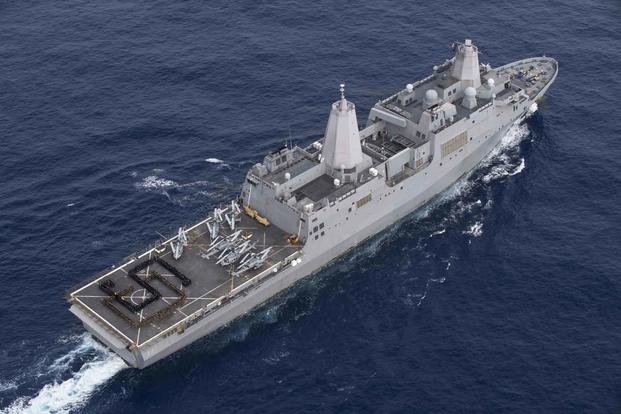
San Antonio-Class Amphibious Transport Dock (LPD-17)
This class of ships has been in commission since 2006. Smaller than amphibious assault ships, amphibious transport docks feature a short flight deck at the back with room for two V-22 Ospreys to launch or land. They're designed to be highly networked and adaptable to emerging platforms and military operations.
With a length of 684 feet, the ships carry a crew of nearly 350 sailors and can support a Marine landing force of nearly 700. To date, 11 ships have been built in the class.
Whidbey Island-Class Dock Landing Ship (LSD-41)
The Whidbey Island class has been in service since 1985, and features a small flight deck for Ospreys or helicopters and a large well deck for amphibious landing craft and connectors. The ships can hold a crew of more than 300 and an embarked complement of up to 500 Marines. The well deck is designed to accommodate up to four Landing Craft Air Cushion (LCAC) hovercraft. All eight ships in the class are still active.
Harpers Ferry-Class Dock Landing Ship (LSD-49)
This small class of amphibious ship has been in service since 1995 and is designed to maximize cargo space. They feature a well deck that can fit two LCACs and a deck at the back for helicopter launches and landings. The four ships in the class went through a modernization period completed in 2014.
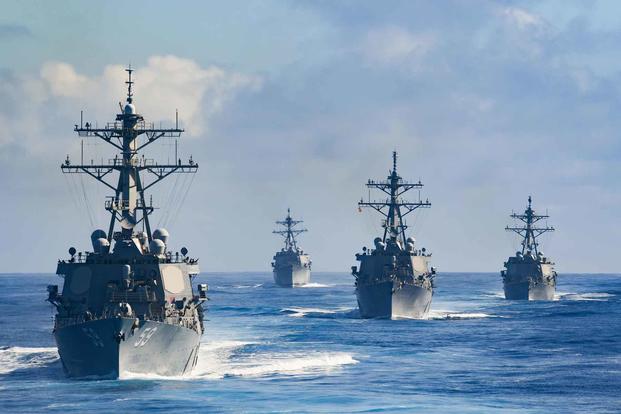
Surface Combatants
There are four active classes of Navy surface combatants. A fifth class, the Constellation-class Frigate (FFG-62) will be under construction starting in 2021 and is set to enter service in 2026.
The active classes are as follows:
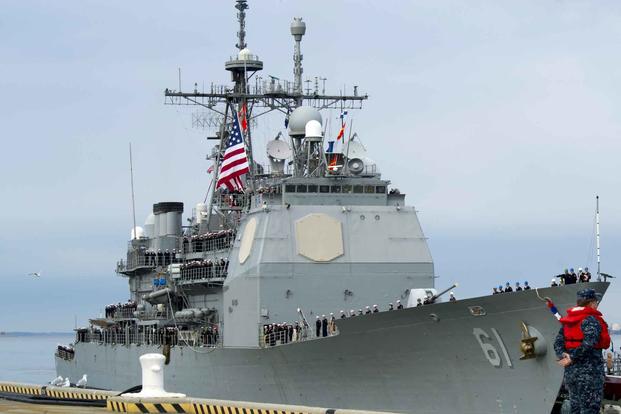
Ticonderoga-Class Guided-Missile Cruiser (CG-47)
This class of cruisers has been in commission since 1983 and is designed as a multi-role warship that can launch missiles, conduct anti-submarine missions and execute interdiction or escort operations.
They're equipped with weapons including the MK41 vertical launching system Standard Missile; Tomahawk Cruise Missile; Vertical Launch Anti-Submarine Rocket missile; Six MK 46 torpedoes; a pair of MK 45 five-inch/54-caliber lightweight guns; and two Phalanx close-in weapons systems, according to the Navy's ship fact file.
The cruisers can support two MH-60 Seahawk maritime helicopters and have a crew of 330.
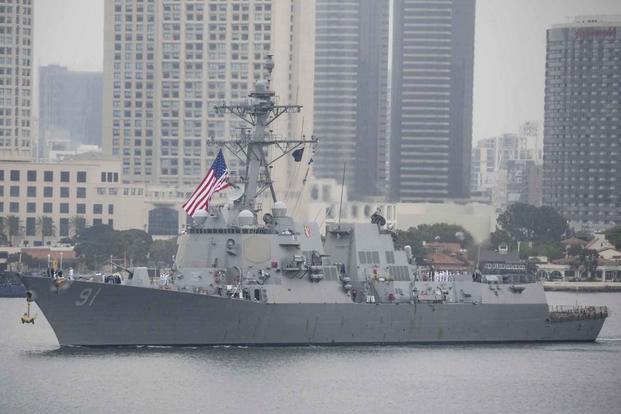
Arleigh-Burke Class Guided-Missile Destroyer (DDG-51)
This destroyer class entered service in 1991 and, with production continuing, is the Navy's longest-running class in production. Its main mission sets include anti-air, anti-submarine and anti-surface warfare. Those missions are supported with armaments including the Standard Missile (SM-2MR); Vertical Launch Anti-Submarine Rocket missiles; Tomahawks; six MK-46 torpedoes; Close In Weapon System (CIWS); MK 45 five-inch gun; and Evolved Sea Sparrow missile.
The Navy groups its Arleigh Burke destroyers into flights based on the upgrades they've received. Flight I consists of ships with the original design; Flight II improvements include the added capability to launch the SM-2 Block IV extended-range missile. Flight IIA ships include additional helicopter hangars and a longer MK 45 gun. Radar system upgrades have also been a key part of the destroyers' evolution.

Zumwalt-Class Destroyer (DDG-1000)
This unique class of stealthy megadestroyer has an innovative hull design that enables it to appear as a small fishing boat on radar, despite its massive size. It's roughly 40% larger than an Arleigh Burke-class destroyer, with a length of 610 feet and displacement of nearly 16,000 tons.
Though its hulking size and dramatic geometry are eye-catching, the ship has been plagued by cost overruns and design challenges that left it without a clear use for the Navy. Only three ships of the class are now planned, down from an initial 32, and only one is in service: the USS Zumwalt.
The ship's signature Advanced Gun System was to have shot a precision-guided 155mm munition, the Long Range Land Attack Projectile, or LRLAP. But the system was canceled after it was determined that each round would cost at least $800,000. Its mission set currently parallels that of the DDG-51. Its other armaments include two 30mm close-in guns systems and 80 peripheral vertical launch cells that can fire Tomahawk missiles, the Evolved Sea Sparrow Missile (ESSM), Standard Missiles, and Vertical Launch Anti-Submarine Rockets.
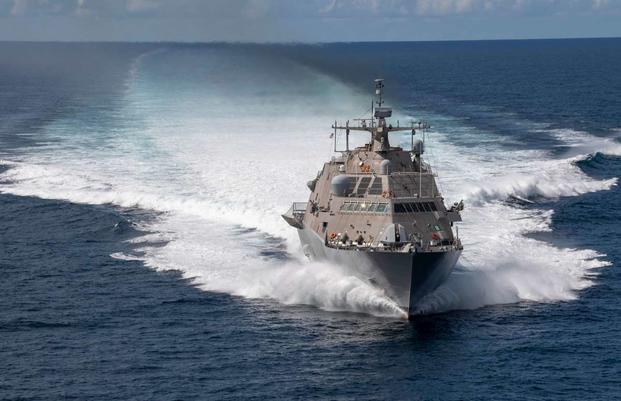
Littoral Combat Ship (LCS)
These smaller, lighter surface combatants were designed by the Navy for missions in the littorals, or near the shore. The class was built in two distinct variants: the monohull Freedom class, built by Lockheed Martin, and the trimaran Independence class, built by a General Dynamics consortium. The ships are designed to be customized for three distinct mission sets: surface warfare; anti-submarine warfare; and mine countermeasures.
But delays in developing mission packages, critiques of the ships' sturdiness and survivability and breakdowns have all plagued the LCS. The first four ships, commissioned beginning in 2008, are already set to be decommissioned in 2021. They were previously sidelined as designated "test ships" to support mission module development. The LCS production run will ultimately be cut short as Constellation-class frigates enter production.
